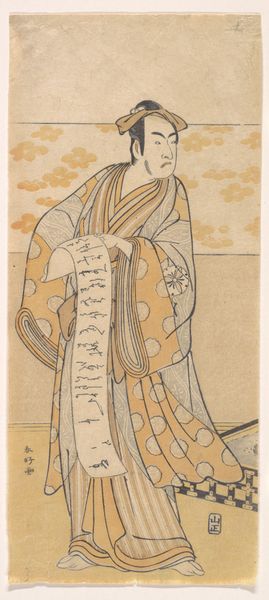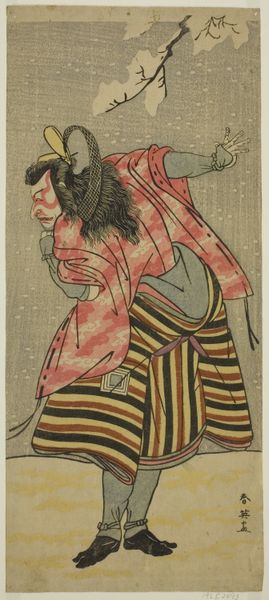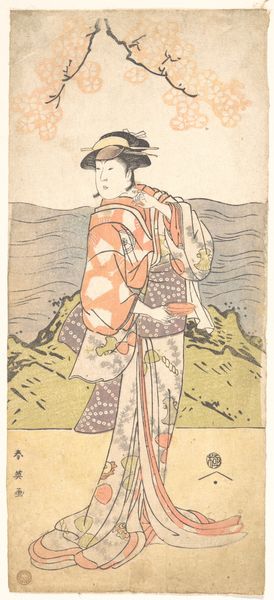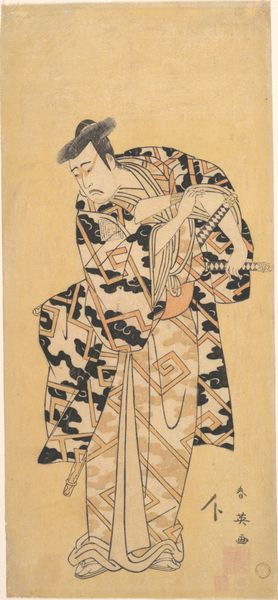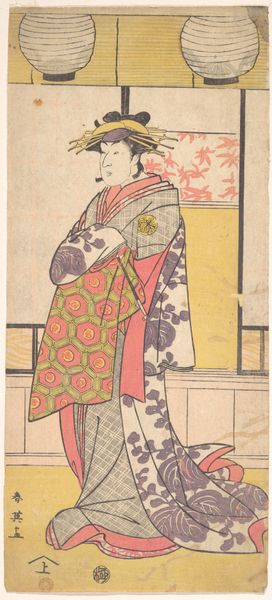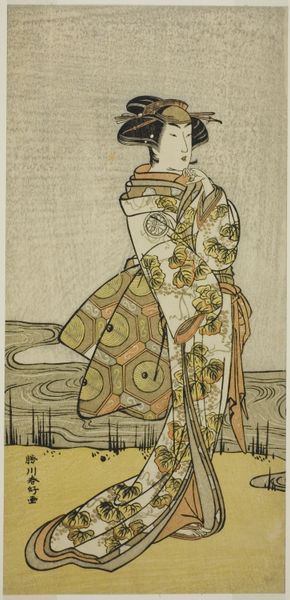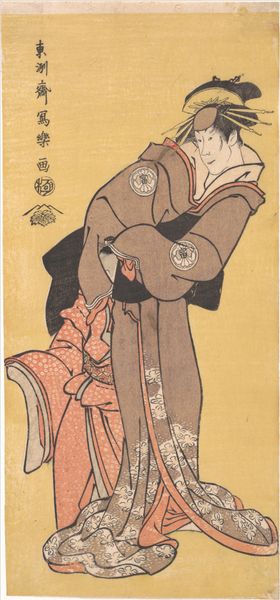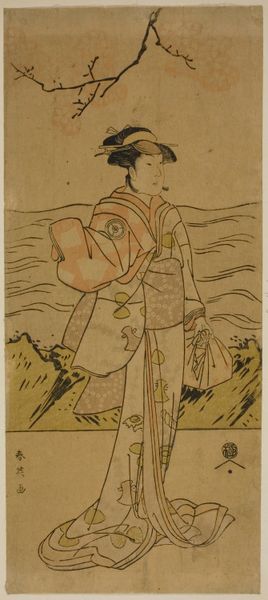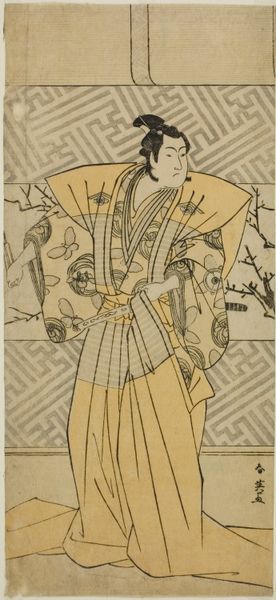
The Actor Ichikawa Aragōrō as Yoshida no Matsuwaka-Maru 1769 - 1825
0:00
0:00
#
portrait
#
ink drawing
# print
#
asian-art
#
ukiyo-e
#
japan
Dimensions: 12 3/8 x 5 1/4 in. (31.4 x 13.3 cm)
Copyright: Public Domain
Curator: Here we have "The Actor Ichikawa Aragorō as Yoshida no Matsuwaka-Maru", a work of Ukiyo-e from the late 18th or early 19th century, created by Utagawa Toyokuni I, utilizing woodblock print. Editor: What strikes me immediately is the sense of stillness. Even with the landscape suggested in the background, the actor's rigid posture dominates, imbuing the image with this wonderful sense of controlled drama. Curator: Absolutely, the pose itself is so important, we can look at the slightly raised hand, as if held with a barely visible rein. This can symbolize a number of archetypes. How does it resonate for you? Editor: The layering of symbols intrigues me. His stern gaze clashes with the soft colors of the kimono, it suggests inner conflict, doesn't it? It almost makes him look fragile. What of the floral patterns? Curator: Indeed, the asymmetry enhances that. You notice on the right the bold meanders which fade to stylized flowers on the left, creating this tension through careful balancing of form and detail. And of course, the writing in the upper right corner! It contrasts between flowing cursive to the very crisp and clean rendering of the name and character. It suggests that one is very practiced or professionalized and one is organic and alive, and both are important. Editor: It also serves as an identification marker for both the character represented, as well as acting like an aesthetic stamp of approval, doesn't it? Much like we see the actors in traditional theater forms, here you also get that sense of contained action—a frozen moment lifted from a wider, symbolic narrative. Curator: It becomes an intersection of form and sign—line, color, shape used as elements that compose and carry meaning. How Utagawa manipulates these core tenets of art helps to see its place as part of art's grand historical movements. Editor: By exploring the weight and history layered within images, we begin to understand these works less as depictions and more as living pieces of cultural memory. I never looked at ukiyo-e this way, I was really touched by this dialogue, so thank you. Curator: And by deconstructing art's base materiality, while equally considering historical position and weight, it only gives one further context. Thanks.
Comments
No comments
Be the first to comment and join the conversation on the ultimate creative platform.

